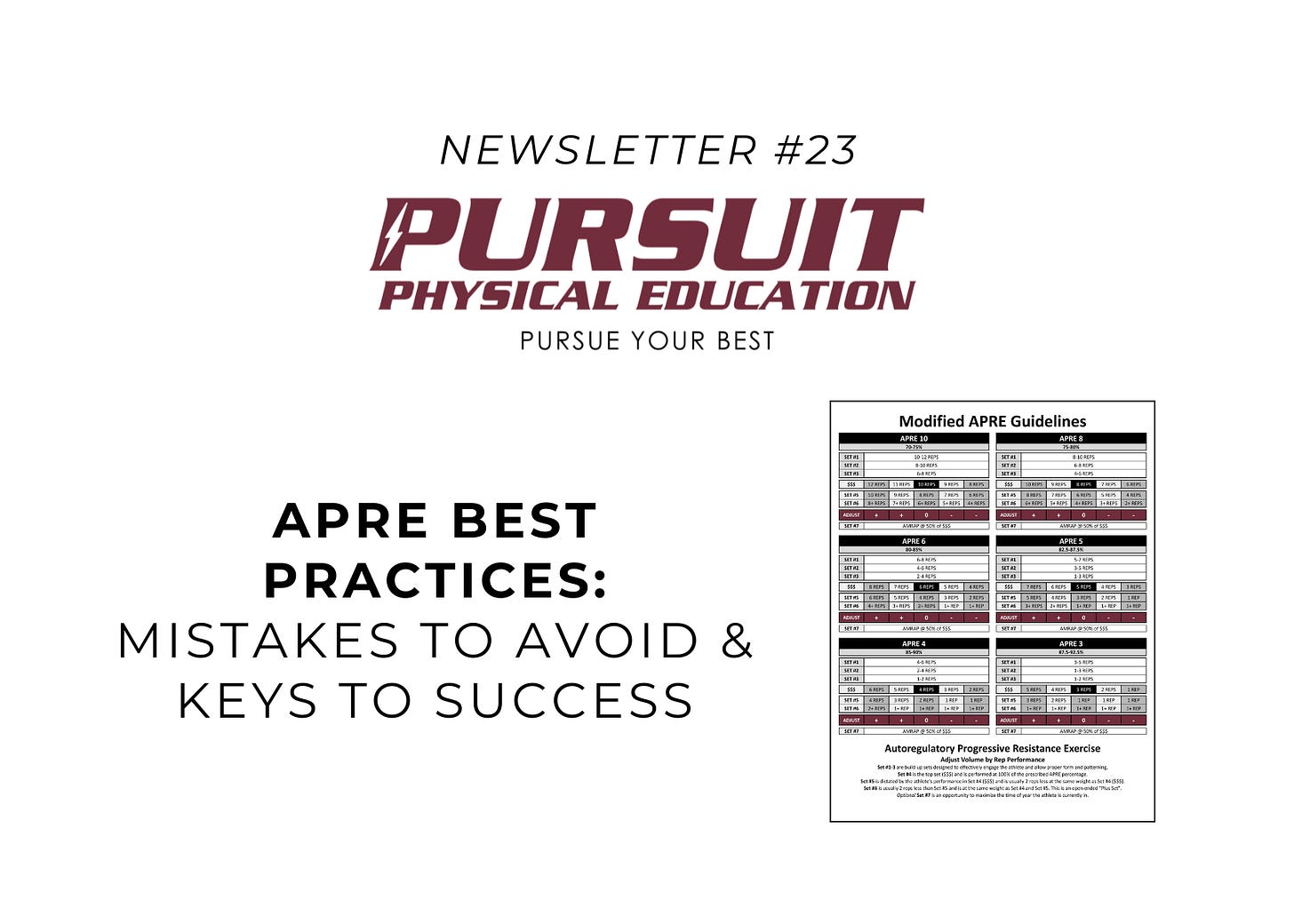APRE Best Practices: Mistakes to Avoid & Keys to Success
#23 - Strength & Speed Coaching – Pursuing Your Best ⚡
In the last issue, we broke down how we modified APRE to fit high school Strength & Speed. If you missed it, I highly recommend going back and reading it—especially if you’re considering using APRE in your own program.
Today, we’re diving into the biggest mistakes coaches make when implementing APRE—and how to avoid them.
Because even a great system can b…
Keep reading with a 7-day free trial
Subscribe to Pursuit PE to keep reading this post and get 7 days of free access to the full post archives.



